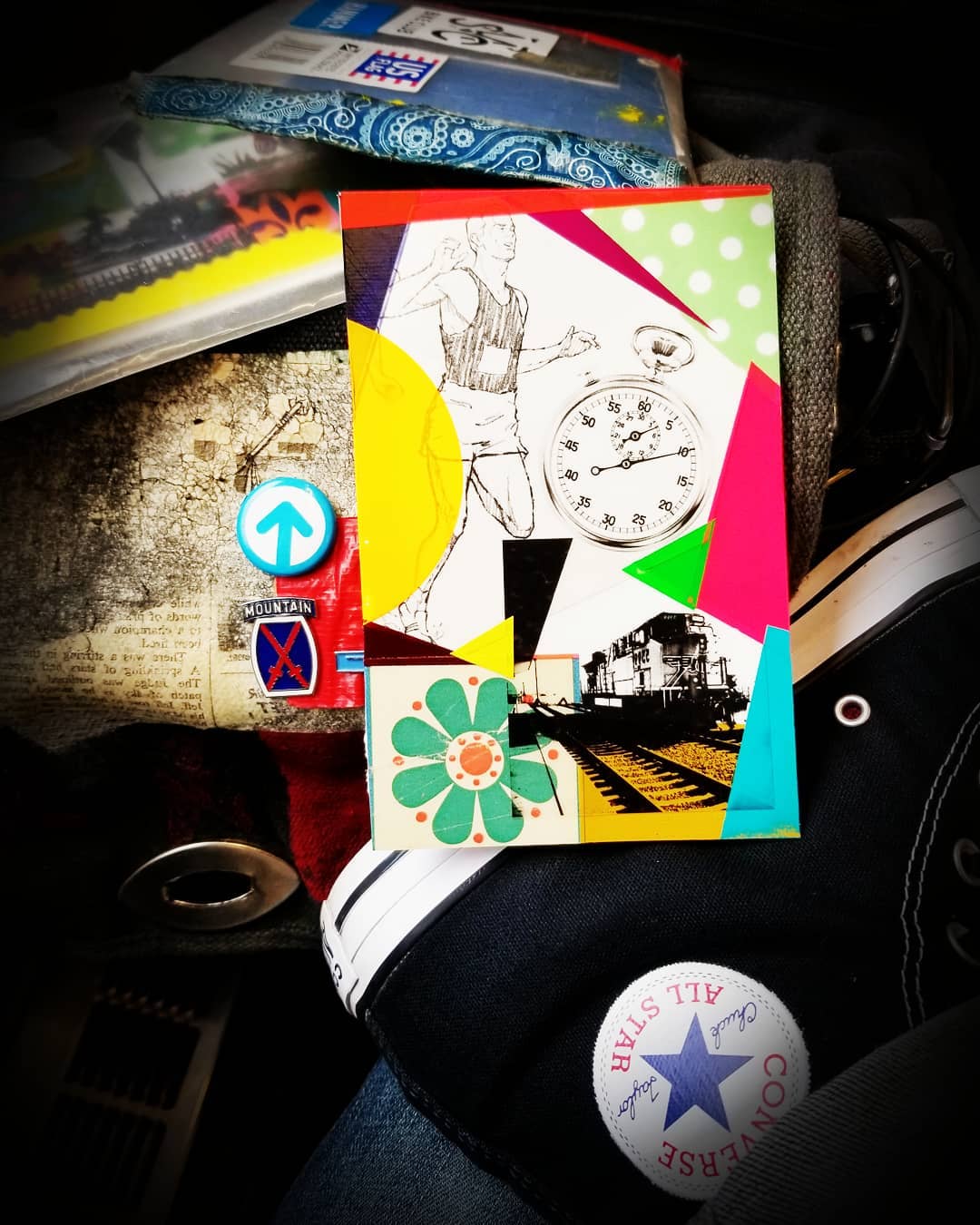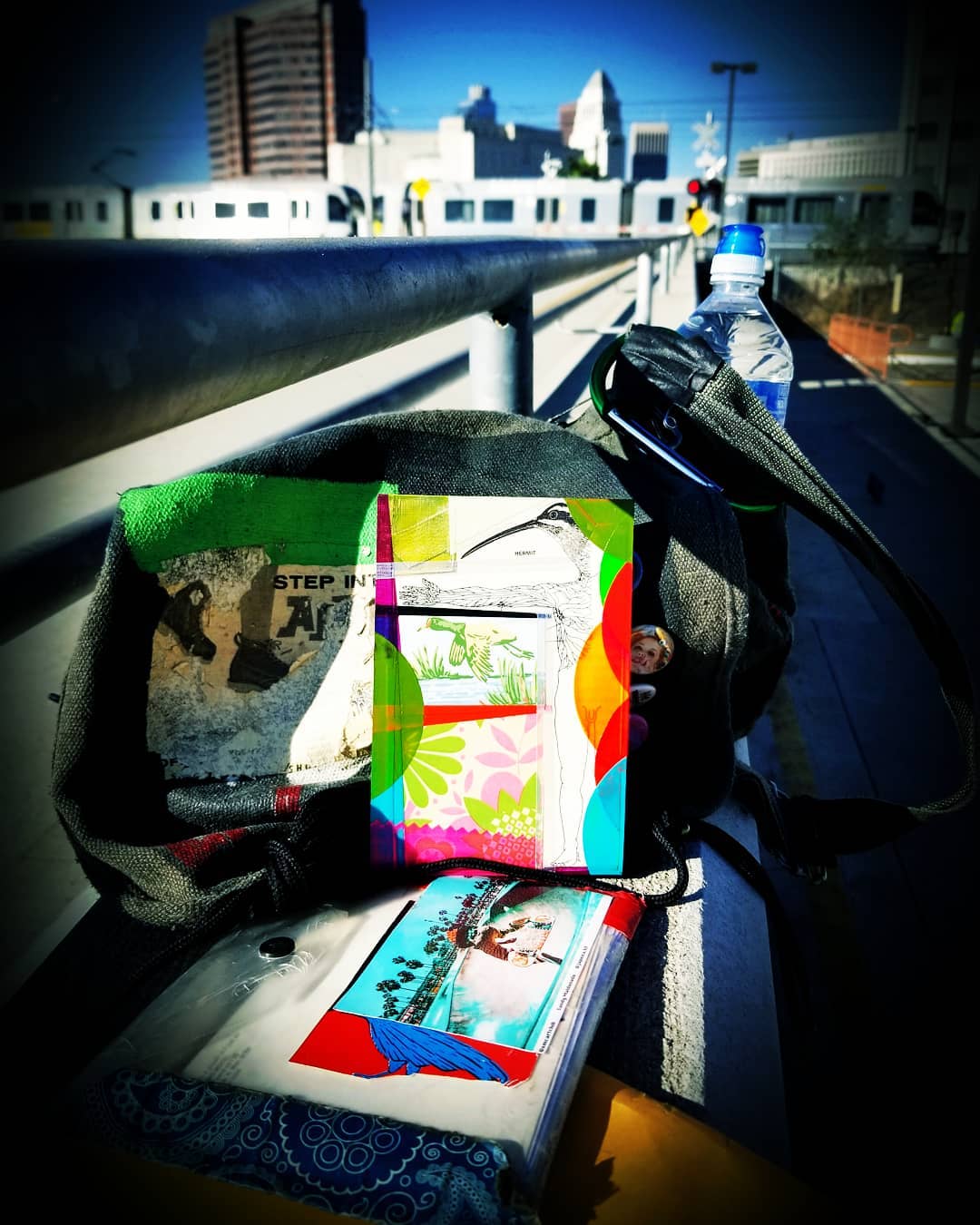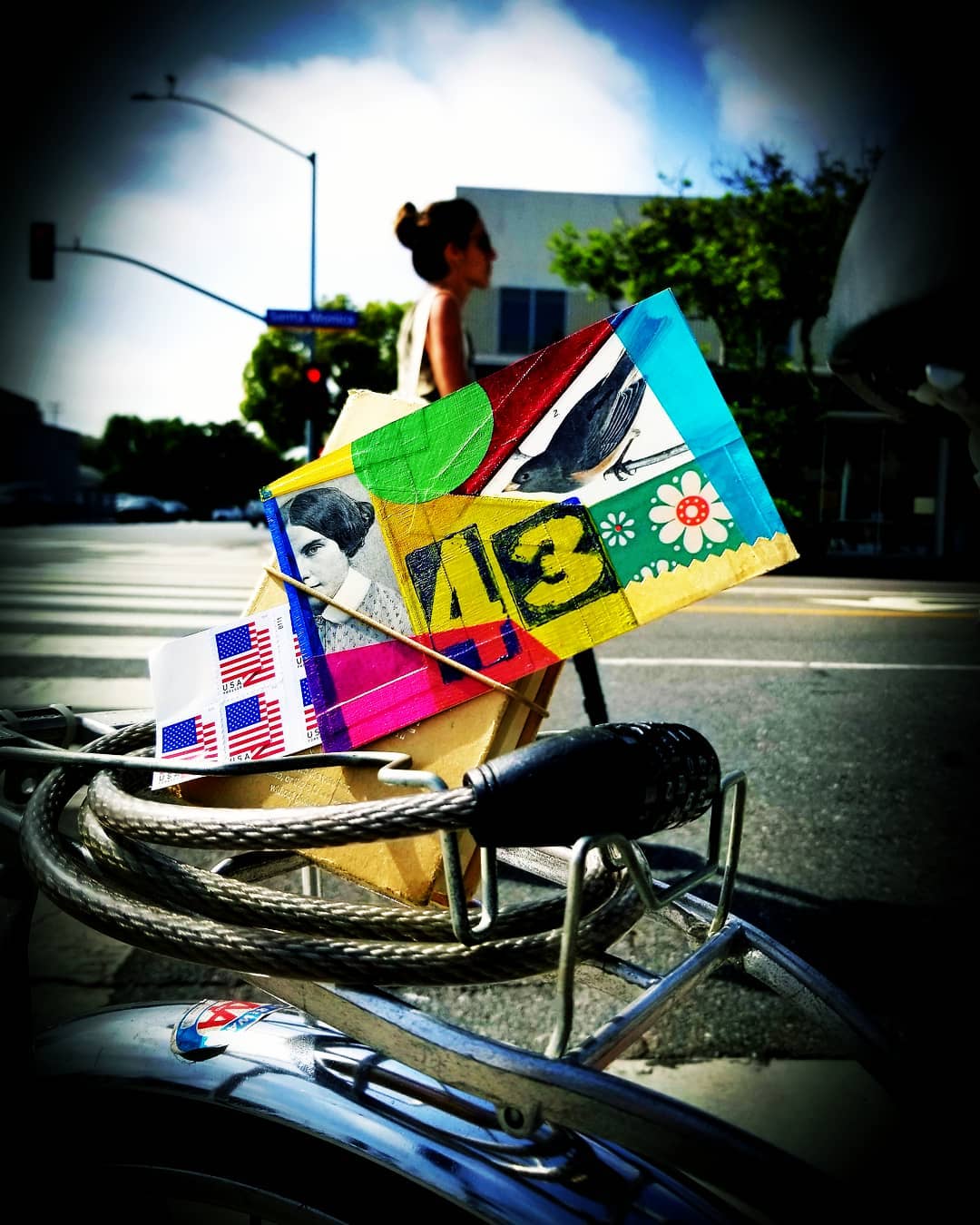interview
ANDREW J. CASTILLO
︎Los Angeles/USA
may 15, 2019
may 15, 2019
Can you tell me a little bit about your background? Where are you from and how did you start to explore art?
Born and raised in southern California, I am a Los Angeles based Artist. I first started making art as a teenager influenced by graffiti artists. It wasn’t until I joined the U.S. Army that I took making collage work seriously. I had a roommate named Avery, he was incredibly talented but very reclusive about his gift. Avery was also very knowledgeable about fine art. After noticing my collage work he suggested that I research artists like Robert Rauschenberg, Joseph Cornell, and Jasper Johns. He then recommended that I visit the Museum of Contemporary Art in Los Angeles while on leave. It blew my mind that something I did naturally was considered an art form. After the army I went to art school at Otis College of Art & Design Los Angeles.



I’m not sure if this a total cliché question, or if you are tired of hearing it, or both, but art and army are not necessarily two things one hears together often, or are they? Have you met lots of creative people in the army? Or rather, since I think everyone is creative to some extent, have you met lots of people in the army that actively do art, with or without a capital A, and if so what kind?
Art and U.S. Army are not words often used in the same sentence. In the army you are not an individual, you are part of a large unit. My unit was 1st Battalion 87th Infantry. The infantry was a job you definitely did not spend a lot of time thinking about making things beautiful. Avery was the only artist I knew of at the time.
I doubt the army - art divide is a U.S. only thing. Do you know what happened to Avery? Is he still making art?
In 2008, the year I stopped making art, his wife found me online through Myspace. She saw my work and read something or saw an army photo. She put it together somehow and asked if I knew her husband. They were living in Brooklyn at the time. Avery and I caught up, and his wife and I were in a show in San Diego together that December. He didn’t make art anymore, but his wife was a fabulous painter. I haven’t spoken to him since. That was when my addiction to alcohol started to take a toll on my life.



You have a project called postcards from the dom (#postcardsfromthedom on Instagram). I’ve thought long and hard but I’m still not quite sure what dom stands for. Dominican Republic? Probably not. Can you explain? You create collage postcards and send them to people around the world. How did this idea start? Could you tell me a little bit about the how and why of the project?
The “Dom" is the West Los Angeles Domiciliary Residential Rehabilitation & Treatment Program. It is rehab for U.S. Veterans. In February 2018 I checked into the Domiciliary because of a serious addiction, I suffered 20 years as a functioning alcoholic. In 2017 I had a minor stroke, I was overweight, and homeless. It was the only option.
During recovery I learned about occupational therapy, this was a way to occupy my mind from addictive behavior. This is how I came up with the idea of #postcardsfromthedom. I hadn’t painted in 10 years because of my addiction. I was insecure about my art, and I needed validation. I recalled artist Ray Johnson making mail art while studying contemporary art history in the past. I figured I could ask the few followers I had at the time if I could send them art in the form of a postcard. I then asked if they would send a photo of the postcard when they received it. This was an attempt to bring back the romance to postage and create a global community. Now sober, having lost 60 pounds, and well over a 100 postcards later, I still continue the process. One handmade collage individually created for a complete stranger anywhere in the world for free, no postage necessary.



What was the feedback to your postcards from the dom project? I imagine fellow collage artists and people receiving one of your cards very much appreciate the beauty, effort and generosity of such a gesture, I sure did, but how about your immediate surroundings, like family and friends?
It’s been amazing. I developed a sense of community and self worth again. I was in a dark place in 2017, isolated and living in a downward spiral. Recovery is a process that is about contributing and receiving. That is what #postcardsfromthedom is for me.
It sounds like you have spent a lot of effort on re-building and re-creating your life. In a way, collage is a medium where you re-build something too. Out of old or new imagery, and out of things you find as much as out of things you may specifically create for an individual piece. That’s essentially what life is all about. Is that something you have thought about?
Yes, 2018 was my year of reinventing. I have a pattern of reinventing, I’ve been doing it my whole life. I think that is why I am attracted to collage. The process is mostly about reinventing discarded images, and the rebirth of forgotten pictures.



Would you like to talk a little bit about the process behind your collage work? Do you work digitally or analogue or both?
Most of my work is completely analogue or collage painting but I do use digital techniques to enhance certain images. My work is based on shape, composition, and colour theory. I use acrylic paint and several types of adhesives.
Many of your collages are very bright and colorful. Where do you think your love of color comes from?
My love of color comes from my youth. I grew up watching some of the most talented graffiti artists in Los Angeles making amazing murals in the 1980’s and 90’s.
Graffiti and street art are often called outsider art. Can you relate to this label?
I think they call themselves exterior designers now, but I still consider myself an outsider artist.



You work with quite an eclectic mix of images. How do you choose your images?
Most of the time the images come from old textbooks, vintage magazines, and my own photos taken while traveling the streets of Los Angeles.
Are you involved in any other local/global art projects? If so, what about your local art world appeals to you?
I am involved in a number of collage collectives, I try to connect to anything I find in the global collage community.



Do you have any specific artistic goals? Are there any particular ways in which you plan to challenge yourself in the future?
My plan is to complete my BFA at Otis College of Art and Design, then pursue a MFA so I can teach fine art in the local community. I also will continue to help Veterans find alternatives in mental health through Art and Occupational Therapy.
Did the technological changes [analogue vs digital, media in general, social media in particular] of the past 20 years influence the way you work?
I haven’t made art in 10 years. I guess the only thing that really changed is the access and opportunity to connect with strangers that I share a passion with.
Who are some of your favourite collage artists?
Robert Rauschenberg was the first major collage artist I identified with. I also love the work of Joseph Cornell, and Ray Johnson.
Andrew J. Castillo on Instagram
interview: Petra Zehner